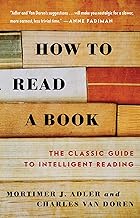Grammar Is an Expression of Your Literacy
– By Phyllis Davis
Ethics & Etiquette Expert in American Business
 I have a gift. After teaching Ethics and Etiquette in American Business for over 35 years, I have learned to laser in and access people after a brief conversation. I do not judge or attach biases; I observe them by evaluating their value to the company. Sometimes, an outside consultant can see things a manager or team leader cannot.
I have a gift. After teaching Ethics and Etiquette in American Business for over 35 years, I have learned to laser in and access people after a brief conversation. I do not judge or attach biases; I observe them by evaluating their value to the company. Sometimes, an outside consultant can see things a manager or team leader cannot.
Over the following few articles, I will cover various traits considered valuable assets in the workplace. This article covers grammar, which is an expression of literacy.
My role in meeting new people in a company is arranged during a small introductory gathering with eight or ten people. The company provides coffee or sometimes wine. I speak for a few minutes, and then we mix it up, allowing me to meet individuals in the group. I move around the room, chat, and ask people to introduce themselves and tell me a little about their role in the company. It is a casual affair, and they are unaware of my motives to offer my initial reaction to their superiors. I am there to discover ways to add value to enhance a company’s productivity. In the process, my job involves spotting areas in people that need strengthening or polishing.
My assessments range from a lengthy list of criteria, including rapport (the pearl of great price), enthusiasm, self-confidence, hostility, arrogance and superiority, openness, lack of focus, company pride and loyalty, and grammar.
 According to the U.S. Department of Education, approximately 54% of Americans between the ages of 16 and 74 read at a level below that of the sixth grade*. Please be aware this statistic does not indicate illiteracy. This large group of people has a vocabulary and a reading level of an 11 or 12-year-old. This group learns from visual and audible cues, film, television, music, parties, people speaking or reading aloud, online audible training, and social interactions. Generally, they do not read books (fiction or non-fiction) at home, and they do not enjoy silent reading.
According to the U.S. Department of Education, approximately 54% of Americans between the ages of 16 and 74 read at a level below that of the sixth grade*. Please be aware this statistic does not indicate illiteracy. This large group of people has a vocabulary and a reading level of an 11 or 12-year-old. This group learns from visual and audible cues, film, television, music, parties, people speaking or reading aloud, online audible training, and social interactions. Generally, they do not read books (fiction or non-fiction) at home, and they do not enjoy silent reading.
- 19% of high school graduates are functionally illiterate, meaning they cannot read well enough to manage daily living and perform tasks required by many jobs.
- 21% of high school graduates read below a fifth-grade level.
- 2/3 of American high school graduates have underdeveloped reading skills.
Part of my role as an expert in my field is to refer low readers to online remedial reading courses, which I have vetted, that will add value to their performance within a company so they can participate more fully and gain self-confidence in performing at a higher level.
According to the famous book (one of my all-time favorites), How to Read a Book – The Classic Guide to Intelligent Reading, by Mortimer J. Adler and Charles Van Doren, Touchstone/Simon and Schuster, 1940, there are four levels of readers.
 Elementary Reading: Basic skills learned in elementary school. What do the words mean, and what does the sentence mean?
Elementary Reading: Basic skills learned in elementary school. What do the words mean, and what does the sentence mean?- Inspectional Reading: Based on time. For example, a teacher might ask the class to read a book in 15 minutes, so skimming is involved. The result of inspectional reading is to ‘determine what kind of book is it – a novel, a history, a scientific treatise?’
- Analytical Reading: This type of reading is for the sake of understanding. It involves the best reading you can do in unlimited time. After reading, the reader grasps the book until it becomes their own. We all have ‘those books’ we have read, devoured, and understood at a core level. As it happens, How to Read a Book is one of those books for me, and I continue to return to it to answer complex questions as both a reader and a writer. It speaks to me.
- Syntopical Reading: This reading level is the most complex and systematic type of reader. Syntopical reading can also be called comparative reading because the reader reads many books and puts them in relation to each other.
For a moment, let us return to the statistic (stated above) that 54% of Americans between the ages of 16 and 74 read at a level below that of the sixth grade. What is the reading level of this demographic? You are correct; it is reading level one. It may also include reading level two, especially in business, because skimming for information is part of life in a job, whether as an entry-level job or a manager.
Sadly, this large group of people only reads like an 11 or 12-year-old. They prefer other learning methods than reading (television, movies, YouTube, etc.). They do not read at reading levels three or four, meaning they lack the desire or the ability to read to understand a book or books on a deep and personal level.
 When I am invited to a company to evaluate employees, I speak with people. I ask them where they live and about their jobs. I may ask them to explain what their normal day involves. I can tell by their vocabulary and grammar what reading level they fall into.
When I am invited to a company to evaluate employees, I speak with people. I ask them where they live and about their jobs. I may ask them to explain what their normal day involves. I can tell by their vocabulary and grammar what reading level they fall into.
If an employee falls into reading level one, I may suggest to their manager they enroll in an online remedial reading course. There is no shame in learning to read at a higher level to advance in a job at any age, whether the employee is 30, 40, 50, or older. In most cases, it was not the school’s fault students did not progress to higher reading levels. The child’s family did not prioritize reading over other activities like sports, games, chores, or family drama.
It is never too late to improve ourselves for the benefit of our jobs, our family life, and most importantly, to benefit our own self-worth. We do not need to wait for a crisis for a method to accomplish our change. Experts in specific fields can offer evaluations and training to enhance our skills and make us more valuable to employers.
In another article, I will discuss the Benefits of Reading and how improving employees’ reading skills impacts a company’s bottom line and productivity.
*The World Population Data on Literacy Statistics states that 79% of U.S. adults are literate. Furthermore, 21% of adults in the U.S. are illiterate. More than 43 million adults in the U.S. cannot read or write above a third-grade level.
If your company would like a Zoom training for an employee or an entire team with Phyllis Davis, Ethics and Etiquette Expert in American Business, please contact me and let me know how I can help you. 804-467-3752 EDT phyllis@etiquette-business.com Join me on LinkedIn


